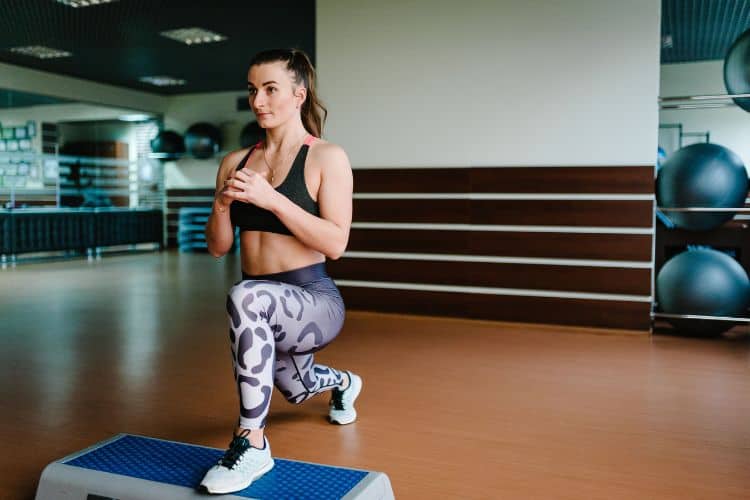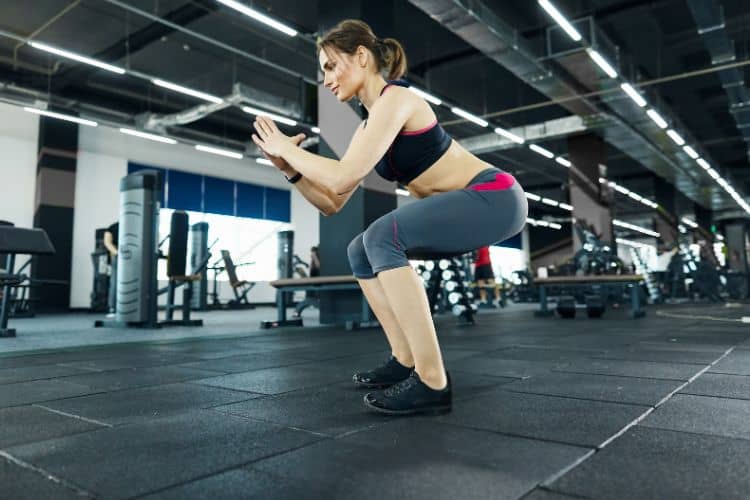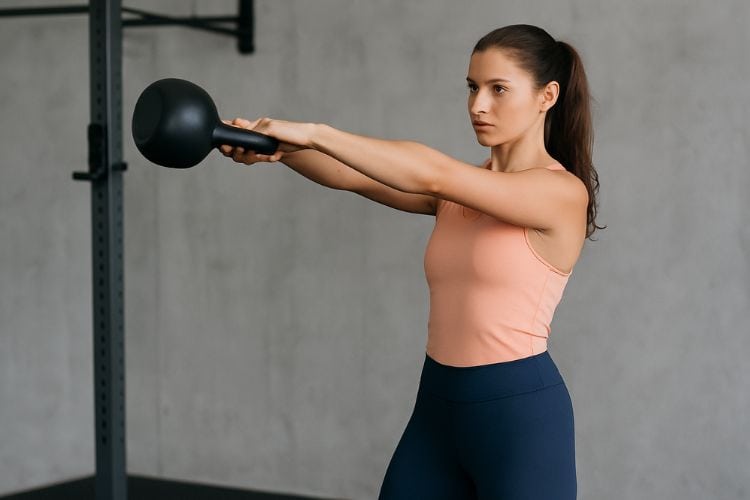Sign up for workout ideas, training advice, reviews of the latest gear and more.






If you’re short on time but want to get stronger, torch calories, and sculpt lean muscle from head to toe, a 30-minute full-body kettlebell HIIT workout moves is exactly what you need. Kettlebells add dynamic resistance to traditional bodyweight moves, giving you a heart-pumping, fat-burning workout that builds power, strength, and endurance in less time.
This Women’s Fit Club guide will walk you through everything you need to know—from the benefits of kettlebell HIIT to the best full-body moves you can do in just 30 minutes. Whether you’re training at home or in the gym, this routine will challenge every muscle group while keeping your heart rate elevated for maximum results.
HIIT (High-Intensity Interval Training) involves short bursts of intense exercise followed by brief recovery periods. When you combine HIIT with kettlebells, you create a hybrid workout that simultaneously boosts cardiovascular endurance and muscular strength.
Kettlebells’ unique shape and handle allow you to swing, press, and pull through multi-plane motions—activating your core and stabilizing muscles throughout the workout. The result: more calories burned in less time and a metabolic boost that continues long after your workout ends.
Kettlebell HIIT targets every major muscle group—from your glutes and hamstrings to your shoulders and core. The constant resistance forces your muscles to work hard while maintaining stability, leading to functional strength that transfers to daily movements.
Studies show that HIIT can burn up to 30% more calories than steady-state cardio. The added load of the kettlebell increases your effort and intensity, helping you torch fat and build lean muscle simultaneously.
Every kettlebell movement requires core engagement. Your abdominals, obliques, and lower back work together to stabilize your body throughout each rep, enhancing core strength and balance.
Alternating between high-intensity intervals and rest keeps your heart rate up, improving your aerobic and anaerobic capacity over time.
You only need a single kettlebell (or a pair if you want to increase the challenge). Choose a weight that is moderately heavy but manageable—something that allows you to complete 12–15 reps with good form.
Recommended weights:
You’ll also need:
Always begin with a dynamic warm-up to activate your muscles and raise your heart rate.
This routine is divided into three 10-minute circuits. Perform each move for 40 seconds of work + 20 seconds of rest, completing three rounds per circuit before moving on.
The classic move that defines kettlebell training. Stand with feet shoulder-width apart, hold the bell with both hands, and hinge at the hips to swing it between your legs. Explosively thrust your hips forward to drive the bell up to chest height. Engage your glutes and core throughout.
Benefits: Activates posterior chain (glutes, hamstrings, back), boosts power, and elevates heart rate fast.
Hold the kettlebell close to your chest like a chalice. Lower into a deep squat while keeping your chest up and knees aligned with toes. Push through your heels to return to standing.
Benefits: Builds quads, hamstrings, and glutes while strengthening the core and improving mobility.
With feet hip-width apart, hold the kettlebell between your legs. Hinge at your hips, lower the bell toward the floor, then row it toward your belly button before returning to the starting position.
Benefits: Targets hamstrings, glutes, and upper back; perfect for building posterior chain strength.
Hold the kettlebell in your right hand, step your right foot back into a lunge, and pass the bell under your front thigh to your left hand. Stand up and repeat on the other side.
Benefits: Improves coordination and balance while activating glutes, quads, and hamstrings.
Start in a plank position with the kettlebell beside your right hand. Reach under your body with the left hand to drag the bell across to the other side, keeping hips square.
Benefits: Strengthens core and shoulders while stabilizing through anti-rotation.
Start with the bell between your legs, hinge back, and explosively pull the bell up to your shoulder (“clean”), then press it overhead. Lower with control and repeat on each side.
Benefits: Develops power through shoulders and arms while engaging core and legs.
Place both hands on kettlebell handles or just outside them. Do a push-up, then row one bell toward your ribcage while stabilizing your core. Alternate sides.
Benefits: Strengthens chest, triceps, and lats while engaging core stability.
Hinge at the hips, then drive the bell up in one fluid motion, finishing with your arm locked out overhead. Lower carefully and switch arms each round.
Benefits: Explosive movement for power, coordination, and shoulder stability.
Lie on your back with knees bent and press the kettlebell straight up from your chest. Lower until your elbow touches the floor, then repeat.
Benefits: Works chest, shoulders, and triceps while providing a safe range of motion.
Hold a plank position with one hand on the kettlebell and the other on the floor. Row the bell to your ribcage without twisting your torso. Alternate sides.
Benefits: Targets back muscles and core anti-rotation control.
Hold the kettlebell at chest height, perform a deep squat, then explode up and press the bell overhead. Lower with control and repeat.
Benefits: Full-body movement that spikes your heart rate and works legs, shoulders, and core.
Stand with feet hip-width apart. Pull the bell up to chest height by driving elbows high and out. Return under control.
Benefits: Engages upper back, shoulders, and traps while improving explosive power.
Sit on the floor with knees bent, lean back slightly, and hold the kettlebell at chest level. Twist your torso to one side, then the other.
Benefits: Sculpts obliques and strengthens core rotational muscles.
Hold a light kettlebell at your chest, squat down, then explode up into a jump. Land softly and repeat.
Benefits: Enhances lower-body power and boosts metabolic burn.
Place the bell on the floor. Perform a burpee, then pick up the kettlebell and perform a deadlift as you rise to standing.
Benefits: Full-body conditioning move that builds strength and stamina.
Finish your session with stretching to aid recovery and reduce soreness.
Proper technique ensures maximum benefit and prevents injury. Keep your core engaged and use your hips—not your arms—to drive most movements like swings and cleans.
For HIIT, work hard during each interval (around 85–90% of your max effort) and recover actively between sets.
As you get stronger, increase the kettlebell weight or reduce rest time to keep your body challenged.
Log your circuits, weights, and times to see your progress over weeks.
Drink plenty of water before and after training, and follow your session with a balanced protein-rich meal for recovery.
The after-burn effect (EPOC) from HIIT means you continue burning calories for hours after your session ends.
Movements like swings and cleans train your body for real-life activities—lifting, bending, carrying—improving mobility and stability.
Combining resistance with high intensity creates lean, defined muscles without bulking.
The quick bursts of effort train your heart to recover faster and perform better under stress.
A full body HIIT session in 30 minutes fits into busy schedules without sacrificing results.
A 30-minute full-body kettlebell HIIT workout is one of the most efficient ways to sculpt lean muscle, torch fat, and build lasting strength. You don’t need expensive equipment or hours in the gym—just a kettlebell, determination, and consistent effort.
Whether you’re a busy mom, a working professional, or simply someone who wants to maximize fitness in minimal time, this routine delivers everything: power, endurance, and a total-body burn you can feel.
So grab your kettlebell, press play on your favorite workout playlist, and get ready to sweat your way to a stronger, more confident you.
Stay up to date on the latest women’s health, fitness and lifestyle trends and tips.